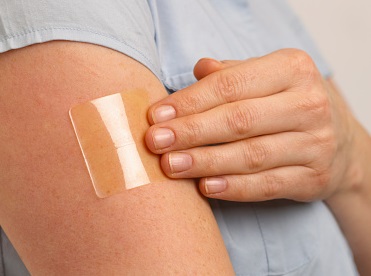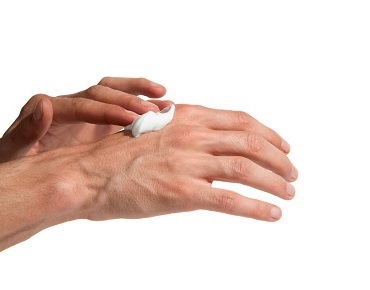Topical and Transdermal – Getting Under Your Skin
The skin is the largest organ of the human body, measuring 22 square feet, on average. Using this large expanse of skin to deliver medicine to the body is not a new concept by any means, and advancements made by modern science are delivering on the potential.
Topical Medications
Topical drugs work at the site of administration to relieve pain, reduce swelling, or stop infection. Since the beginning of recorded history, poultices and medicinal plants have been used to wrap wounds and soothe pain. Today gels, creams, foams and ointments hold the medicine to be applied, directly where you need treatment. Antibiotics, anti-bacterials, anti-inflammatories, and others, can be applied topically, targeting the nerves involved without going through the digestive system or significantly affecting the blood stream. Sore from a big workout? A pain relieving gel rubbed directly on the muscle provides relief without involving other body systems, or systemic exposure to a drug. Generally speaking, topical treatments are used for treatment of relatively minor conditions in otherwise healthy people.
Transdermal Medications

Transdermal medications (usually in the form of a patch) are a little more modern, and a little more complex. The first transdermal drug, scopolamine, to treat motion sickness, was approved by the FDA in 1979, and great strides in transdermal drug delivery have been made since then.
Transdermal drug delivery systems, or TDDS, bring medication through the skin (beyond the site of application) to the bloodstream. Once in the blood, the ingredients circulate and take effect at a targeted location – the brain, the central nervous system, the heart, etc. Medication is delivered steadily, and can be stopped by simply removing the patch. Because your body doesn’t have to digest the medicine through the stomach, more of it reaches the bloodstream, and there’s less chance of side effects.
Advantages of TDDS
There are many situations where TDDS are helpful, including but not limited to:
- In treatment of conditions where a continuous, steady level of medication is important – pain control, anti-smoking, addiction treatment, diabetes, etc.
- For vomiting patients who can’t keep medication down
- In unconscious patients – a patch can easily be applied (or removed) as needed
- For patients where treatment compliance could be an issue
Advancements in clinical practice
The science of transdermal drug delivery has advanced materially since the first patch in 1979. The original patches are still in use, mostly for steady delivery of low-dose drugs; chemical enhancers and other methods to deliver medication through the skin’s barrier layer have improved the technology.
The latest delivery systems use microneedles, thermal ablation, and other sophisticated methods to pass medication through the skin. For example, microneedles and thermal ablation are currently being used for delivery of insulin, parathyroid hormone, and influenza vaccine (among others). The impact on medicine and on the health of patients is meaningful. This is expected to continue as scientific advancements allow for more therapies to be delivered transdermally.
Altasciences’ experience in TDDS technology
At Altasciences, we have completed hundreds of studies in every major category of topical and transdermal products. Our high-precision, computerized adhesion assessment process, using ImageJ software and other proprietary tools, offers enhanced adhesion determination capabilities.
All our studies meet NDA and ANDA requirements in North America and Europe.
Our database of over 225,000 participants ensures that we get your study up and running, fast, and our excellent retention rates maximize validity of data.
From nicotine patches to narcotic implants to antibiotic creams, we have the knowledge and experience to help you assess your transdermal and topical medications.
Contact us today to learn more! Contact@altasciences.com




